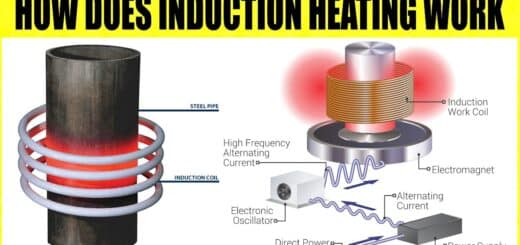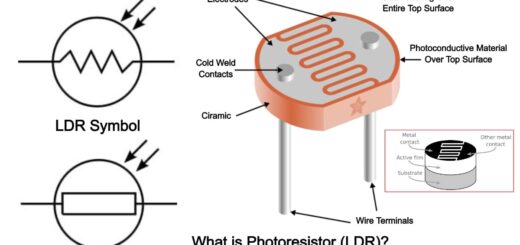12 Advantages of Current Transformer – Explained with Details]
![12 Advantages of Current Transformer - Explained with Details]](https://engineeringlearn.com/wp-content/uploads/2023/03/Advantages-of-Current-Transformer-1024x539.jpg)
Introduction
Advantages of Current Transformer – Explained with Details]: – The electric power generated in a power plant is moved through power lines and distribution systems to be consumed through private applications. The current levels ought to be measured during production and distribution to ensure that the optimal values are transferred at different points along the power distribution system. This current is most of the time very high, which can’t be measured with a conventional ammeter.
A transformer is a device that comprises two windings called primary and secondary windings. It transfers energy starting from one side and then onto the next side with a suitable change in the level of current or voltage. Specialized transformers known as instrument transformers measure exceptionally high voltage and current along the power system. The instrument transformer used to measure or gauge high current value is known as a current transformer.
What are Current Transformers?
Current transformers are an essential component in the electrical power industry, providing a means of measuring and monitoring the flow of electrical current in power transmission and distribution systems. Direct measurement of high currents by measuring instruments isn’t just expensive, yet in addition sometimes and then exceptionally perilous and troublesome. Hence, the current passing through the circuit should be reduced to a specific value to be measured.
The current transformer connected or associated in series to the circuit diminishes the magnetic field created by the current passing through the primary circuit and moves it to the subsequent circuit which is called the secondary. On account of the cyclic current happening in the secondary circuit, how much current flowing in the primary circuit can be measured by the measuring device connected in parallel to the secondary winding. The two fundamental purposes of Current Transformers are metering of current in a high voltage line and sensing faulty power conditions in order to trigger the relevant protection or security systems.
Advantages of Current Transformer
Below are some advantages of the current transformer: –
1. Measures High Currents: ( Advantages of Current Transformer )
The principal purpose of the current transformer is to produce, from the primary current, a proportional secondary current that can be measured effectively or used to control different circuits. The larger current values can be effectively measured.
Current transformers can be utilized in a synthetic circuit to measure the fault current, working with the safe measurement of large currents, frequently within the sight of high voltages. The primary winding is connected in series with the source current to be measured, while the optional winding is regularly connected to a meter, transfer, or burden resistor to foster a low-level voltage that is amplified for control purposes.
2. High Electrical Isolation: ( Advantages of Current Transformer )
Its ability to isolate the high voltage and current to low values ensure safe operations and safe handling of the equipment. Current transformers offer electrical isolation among measuring instruments and high-voltage power circuits. So electrical insulation prerequisites can be reduced in protective circuits and measuring instruments.
3. High-effective Cores: ( Advantages of Current Transformer )
Regularly, cores with high effective permeability are utilized in current transformers to minimize magnetic current and reduce errors.
4. Easy Supply & Control Functions: ( Advantages of Current Transformer )
A current transformer is powered by the current it measures. It does not require additional power. Plus, the output signal of a CT scan straightforwardly set off the electromechanical relays. It doesn’t need extra amplification.
5. Simple Construction: ( Advantages of Current Transformer )
Current transformers are broadly utilized as measurement or protective transformers. One more benefit of the current transformer is its simple construction and ease of installation.
6. Clamp-on Types: ( Advantages of Current Transformer )
The placement of the current transformer draws certain limits for the shape and size. The current transformer is put inside the induction motor’s terminal box, around the phase conductor. This restricts the maximum size of the transformer core. Clamp-on-types can be utilized to ease the installation so the transformer can be installed without disconnecting the phase conductor from the motor end.
7. Effective Measurements: ( Advantages of Current Transformer )
Different instruments can be dealt with a single transformer. In addition, the measurement results are not affected by the temperature of windings or magnetic cores, if within acceptable points.
8. Easy Maintenance & Installation: ( Advantages of Current Transformer )
Damaged parts of a current transformer can be replaced easily. Current transformers have powerful mechanical strength and a compact design. They are not difficult to transport, store and install. Additionally, they are maintenance-free all through their life expectancy.
9. Safe AC Measurement: ( Advantages of Current Transformer )
Current transformers don’t permit the measurement of DC signals, so they can’t be suitable for dielectric discharge detection; be that as it may, they can be utilized in the measurements of inductive currents and voltage waveforms with optional load impedance. External magnetic fields barely influence the measurement results.
10. Various Types: ( Advantages of Current Transformer )
Current transformers have different types, for example, molded case, summation, cable split-core, three-phase, DIN rail, compact, flexible, split-core residual, and differential current transformer. This multitude of types has various functions.
11. Wide Applications: ( Advantages of Current Transformer )
CTs can be utilized in wide applications, for example, branch circuit monitoring, substation error detection, current estimation for motor detection, industrial electricity metering, and smart electricity metering.
12. Cost: ( Advantages of Current Transformer )
With the standardization of current transformer secondary winding ratings, it is feasible to standardize instruments around these ratings or evaluations and, hence, there is a great reduction in the costs of current transformers and instruments.
Conclusion
A current transformer has various applications, including measuring current and power, checking the power grid operation, and operating a protective overlay. A current transformer is utilized to measure the high current going through a line, and furthermore as an insulation device between power circuits and metering devices. In general, the current transformer empowers users to identify the high-value current across the circuit.
However, it is beneficial in real-time applications, drawing exact readings without harmonics and current error is an essential task. In addition, with increased demand, the accuracy and development of automatic digital current transformers reduces the power loss during transmission, and furthermore transmits or calculates the load demand according to the user requirements right then and there of time. In the long run, current transformer testing and potential transformer testing ensure or guarantee that instrument transformers are working precisely.
Content Source: – tameson
Image Source: – twicloelectrical













